Overview of acacia species
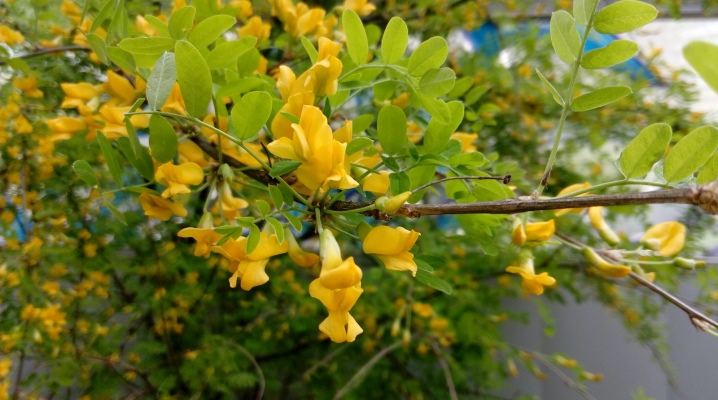
The origin of the word "acacia" has several versions. One of them refers to the Greek translation - "sharp", the other - to the Egyptian - "thorn". The acacia genus belongs to the legume family, includes more than 1,300 species, and many of them do not have thorns.
Parts of the world like Africa, North America, Australia, Asia, concentrated 80% of these beautiful plants on their territories... Acacia was cultivated in Europe in the 18th century. Depending on the variety and habitat, the plant can be a tree or a shrub.
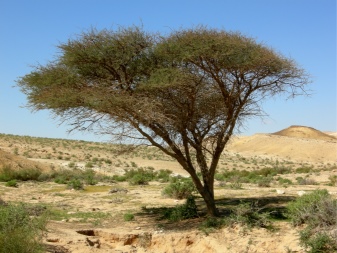
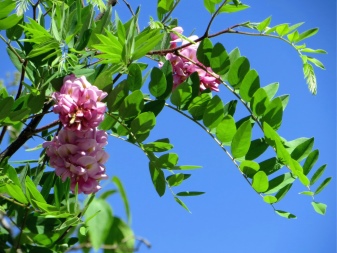
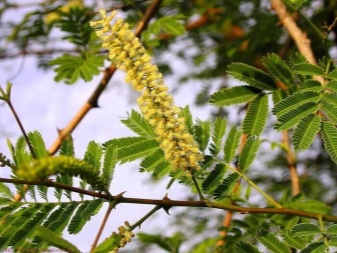
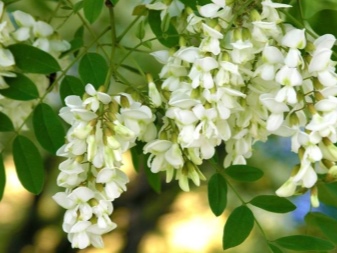
Overview of popular species
Most species have extensive root systems. The central root goes deep into the soil to provide the plant with moisture and trace elements. The maximum acacia grows up to 30 meters with a trunk girth of one and a half meters. The bark of a young plant casts a silvery color, and becomes brown with age. Many Acacia varieties have narrow, elongated, and pointed leaves. They represent a long petiole with paired leaves, on average from 8 to 20 pairs. Depending on the type of inflorescence, they have large and small flowers (in the form of peas). Acacia fruits are in brown pods, on average 5-7 pieces in each.
The general description may not quite coincide with each specific species - you can see this by looking at an overview of different types of acacias.
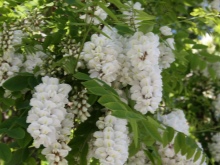
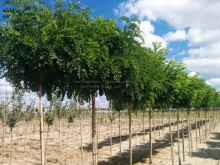

Curved
Homeland is Australia (New South Wales). The shrub reaches a height of 1 to 6 meters, the branches grow at an acute angle up to 2.5 m. The paired leaves are 8-10 cm long and 7 mm wide, they are elongated with a narrowed base and a rounded top. Inflorescences contain 10-12 spherical heads on a 4-centimeter peduncle. Each head is 8 mm in diameter. The beans are 7 cm long and 7 mm wide.
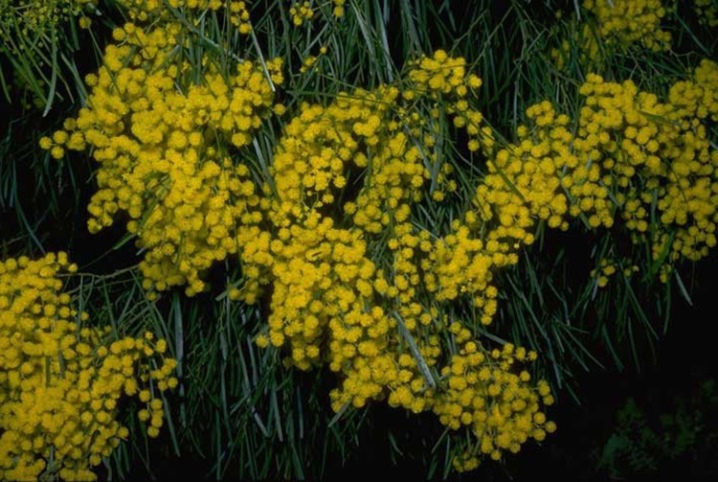
Double-edged
The second name of the plant is fringed acacia (Acacia anceps). The shrub grows from a meter to 3 meters in height, widely spreading branches to the sides. It has dense, narrowed at the base, alternate ovoid leaves. Axillary yellow flower peas are singly located on long pedicels.
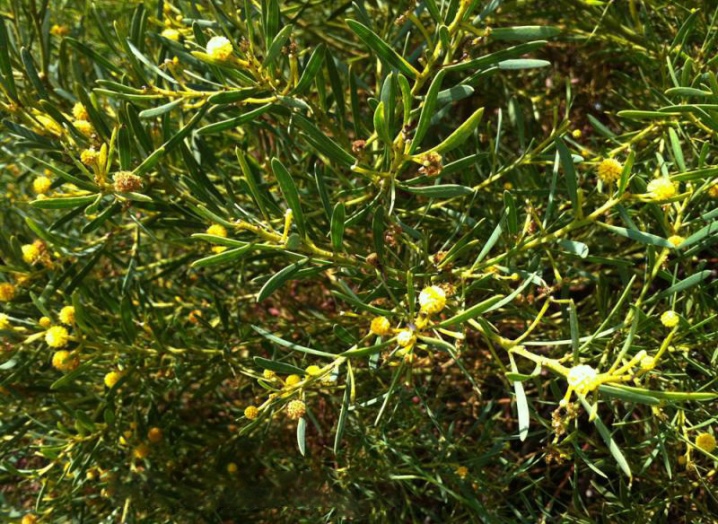
Veinless
The second name is mulga (Acacia aneura). Among the desert species of Australian xerophytic shrubs, the veinless acacia occupies a leading place. It can be considered a fodder variety, since it grows quickly from 2 to 7 meters and populates the most arid regions, mulga is eaten with pleasure by livestock. Refers to endemic plant species.
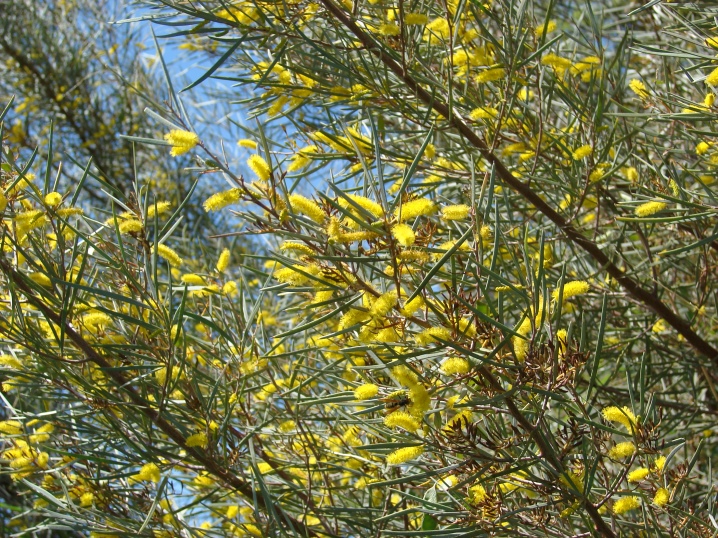
Leafless
Acacia aphylla grows in southwestern Australia in rock breaks surrounded by eucalyptus forests. It belongs to endangered species. The shrub reaches a height of 2-2.5 m, has no leaves, but is oversaturated with golden spherical flowers. The flowering period of Acacia aphylla occurs from August to September, the fruit ripens from December to March.
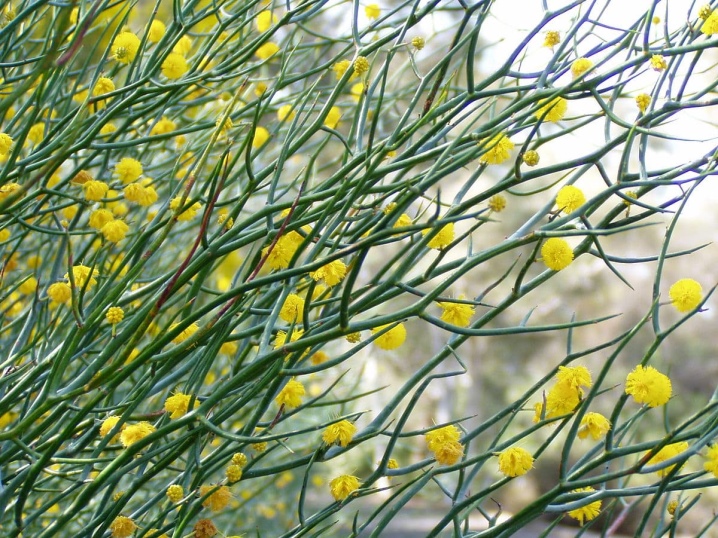
Ashby
Acacia ashbyae is a medium-sized shrub. Its height is usually 2 meters, the width of the bush grows in the same size. It has elongated, oblong leaves of light green color up to 9 centimeters long and 0.3 cm wide, they are solid and dense. Young foliage is white-pubescent or cream-colored. Short brushes are strewn with small yellow pea-shaped flowers, each no more than a centimeter in size.
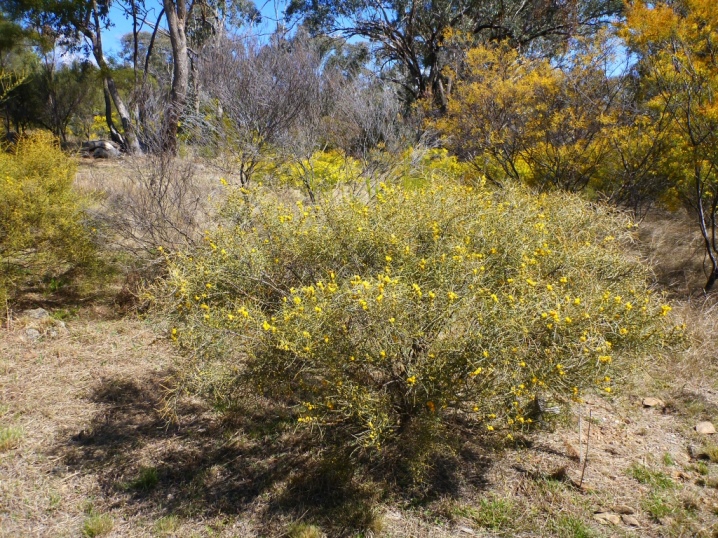
Multi-prickly
Its second name is “fire thorn” (Acacia ataxacantha). The climbing shrub has spines 1 centimeter long, shaped like a predator's claw. They are scattered on the branches in a chaotic manner, with their help the flexible acacia clings to any support and forms a bush. Two-leafed leaves can reach 15 cm. They comprise about 10 bases, dotted with 20 to 40 pairs of small leaves. Dense flowers are spike-shaped inflorescences located in the axils of the receptacle. They have a white tint, grow up to 8 cm in length.
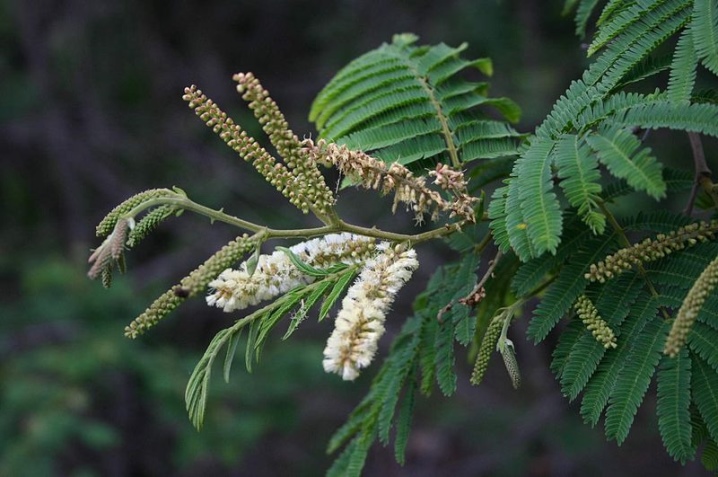
Bailey
Acacia baileyana grows as a medium-sized tree. The habitat is Australia, and more specifically, New South Wales. Abundant flowering occurs from March to April. Delicate yellow flowers with a pleasant aroma are collected in axillary clusters of 10 pieces. Acacia has double-pinnate leaves on 2 or 4 pairs of branches, each of which is dotted with 8 to 18 pairs of narrow-lanceolate leaves. Miniature leaves are up to 6 mm long and 1 mm wide. They are pale green in color with a silvery coating.
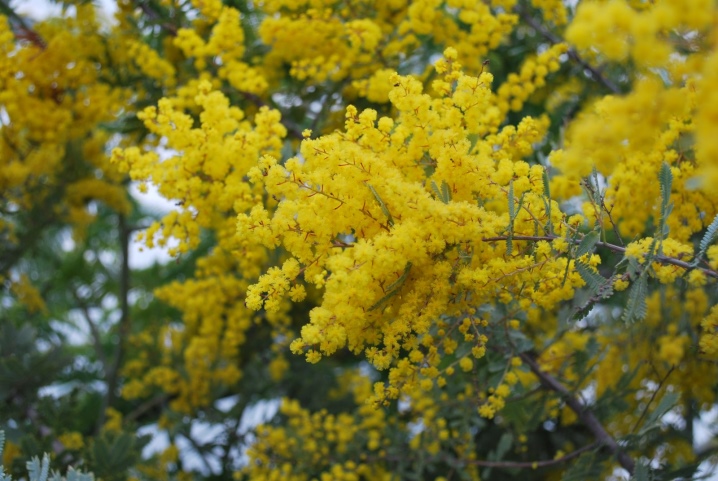
Two-core
Acacia binervata is a shrub that grows up to 5 meters tall, but can form as a 15 meter tree. It has deep-seated lanceolate or tapered elliptical leaves 5 to 12 cm long and 2.5 cm wide. The foliage is pink with a wavy edge and a pointed end, the pattern is 2 elongated veins. The inflorescences are collected in cream-colored baskets, each of which consists of 20 tiny flowers.

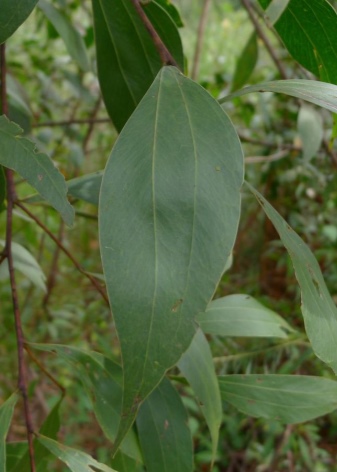
Short spikelet
Acacia brachystachya grows as a shrub up to 5 meters in size with large, spreading, densely planted branches. The narrowed, bluish green leaves grow up to 14 cm long and only 2 mm wide. Yellow flowers up to 2 centimeters long are collected in elongated brushes in the form of cylinders.
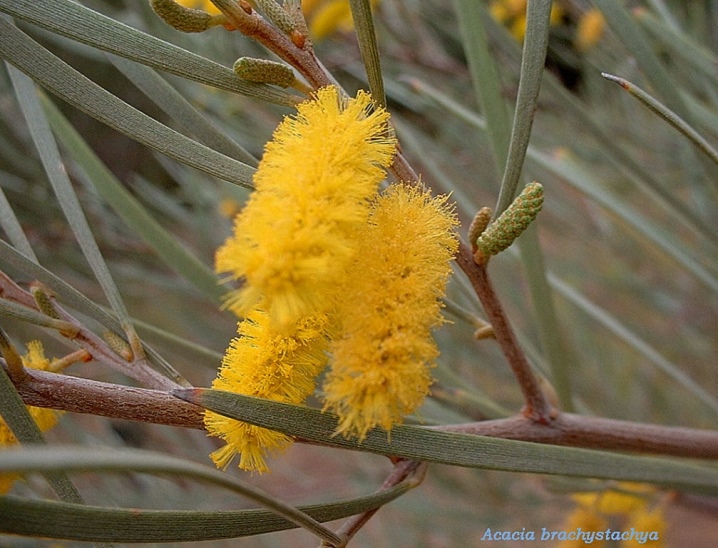
Boxwood
Acacia buxifolia forms a shrub that grows up to 4 meters high. It can be found in the North American and Australian wooded areas. The spherical flowers are hot yellow in color.
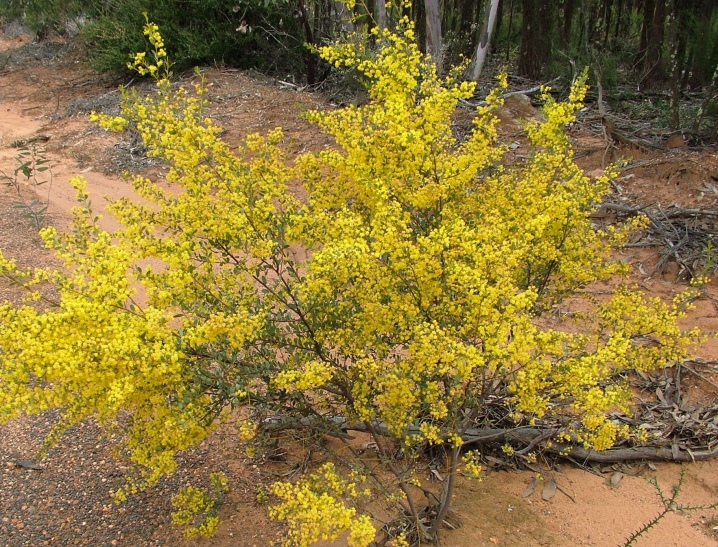
Calamus
Acacia calamifolia is a small spherical shrub in a volume of 4 to 10 m. Narrow-linear green leaves with a grayish bloom can be from 5 to 11 cm long with a fine pointed tip at the end. Juicy yellow clusters contain up to 50 flowers. Shriveled beans lengthen up to 14 cm.
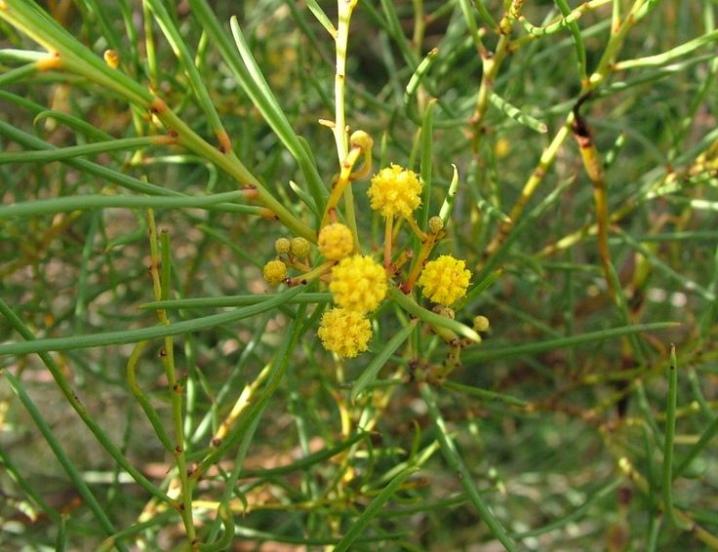
Prickly
Acacia tetragonophylla is better known as curare (dead end). It grows in Australia in the form of tall bushes or small trees, whose growth does not exceed 4 meters. The metamorphosis that once occurred with the leaves of some plant species gave rise to phyllodes. In prickly acacia, they look like thin formations up to 3 centimeters in length - at first soft and flexible, and then hard and very sharp. Yellow flowers are collected in spherical groups.
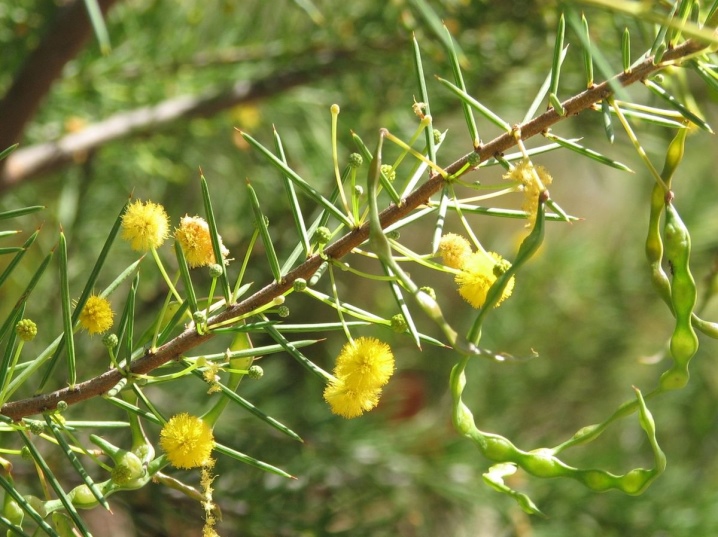
Caven
Acacia caven is a small deciduous tree. Its height is no more than 5 meters, South America is considered its homeland. The plant has a dark bark color, double-feathery leaves. All branches are dotted with small thorns. Small (up to 2 cm) yellow flowers are collected in the axils of 3 pieces. Lignified beans reach 10 cm.
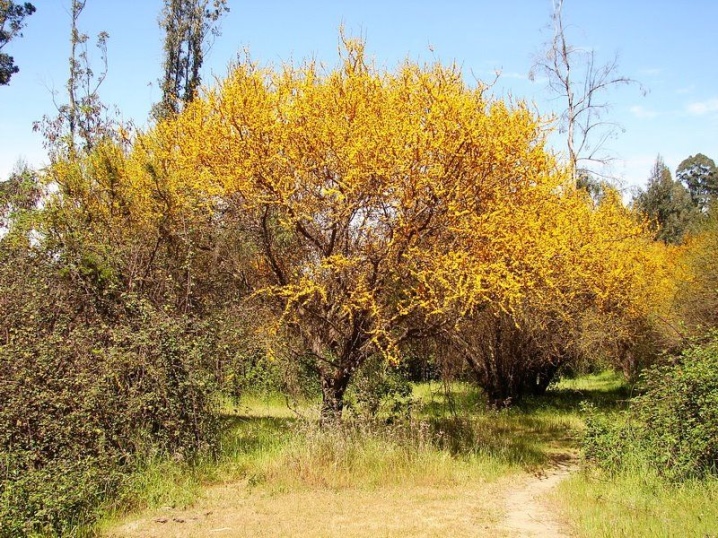
Spoon
Acacia cochlearis is a dense shrub from half a meter to 3 meters in height. Has dense lanceolate alternate leaves in the form of ellipses, 2 centimeters in length and about a centimeter in width. Bright flowers of hot yellow color are collected in 40 pieces in rounded racemes.
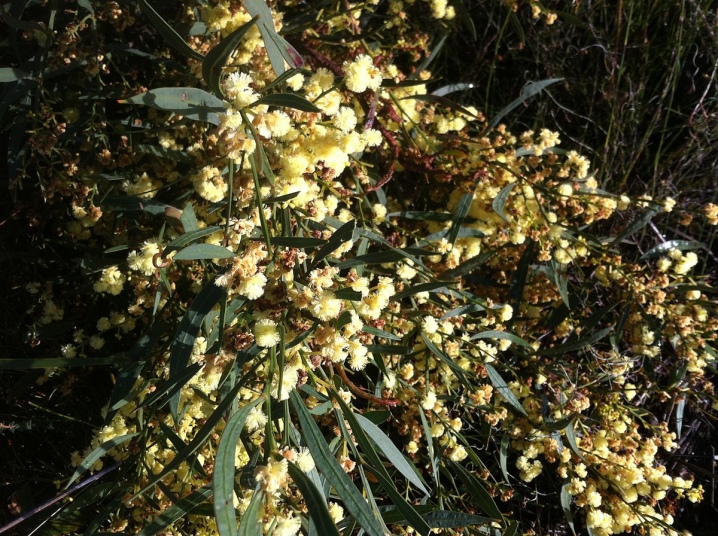
Compressed
Acacia constricta is a voluminous shrub that grows up to 3 meters wide and up to 2 meters high. Young stems are purple in color, eventually turning gray with 2 cm white spines. Small paired leaves lengthen up to 4 centimeters. The flowers are one centimeter in diameter and form yellow heads.
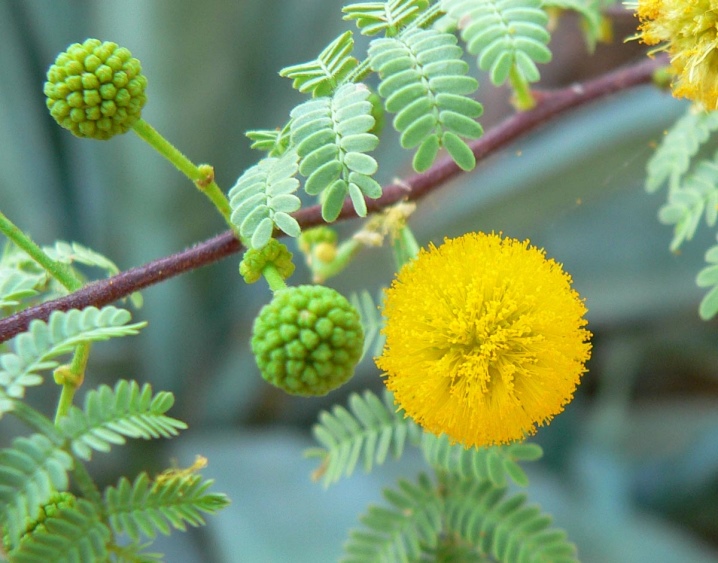
The acacia family has many decorative species used in landscape design.
Willow acacia (Acacia saligna)
The willow acacia has no thorns, it can be formed as a bush or a small tree from 3 to 5 m. The plant blooms in spring with a fluffy abundance of yellow inflorescences. They reach half a meter and look like sunny thickets of many tiny peas.
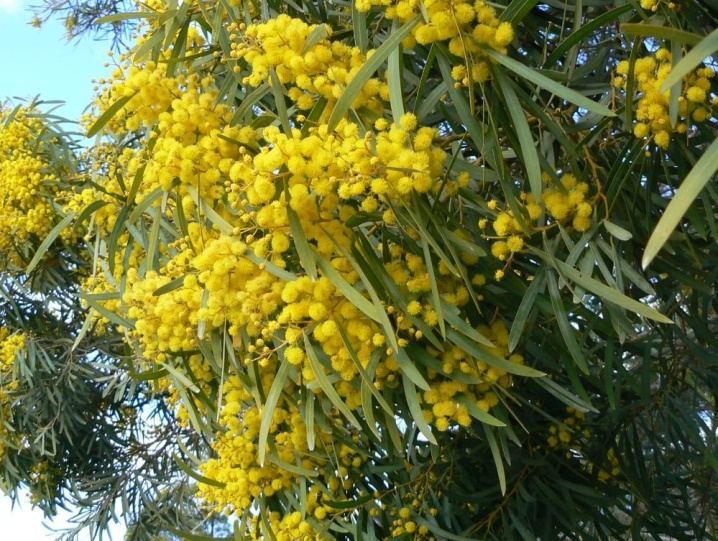
Armed acacia (Acacia armata)
The shrub grows up to 3 meters, a large number of branches create a beautiful volume. Instead of leaves, there are leaf-like extended cuttings (phyllodia), which is typical for many species of acacias. The knotty branches are endowed with thorns and lend themselves well to the formation of the pruning method. In the spring, dazzlingly bright yellow inflorescences bloom.
In caring for the action, only water and sun are needed, and she organizes the beauty and mood of the garden herself.
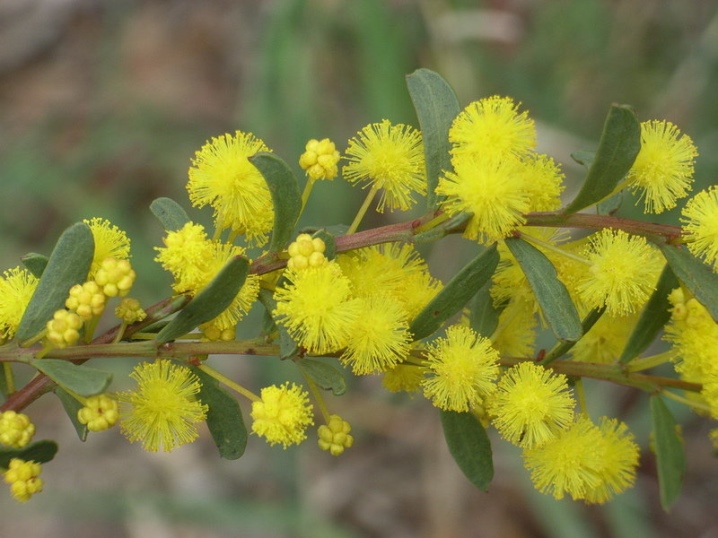
Beautiful acacia (Acacia pulchella)
A beautiful evergreen tree with matte leaves and sharp thorns. Long drooping segments have small paired leaves with curled ends. The capitate inflorescences are dotted with a scattering of small golden flowers.
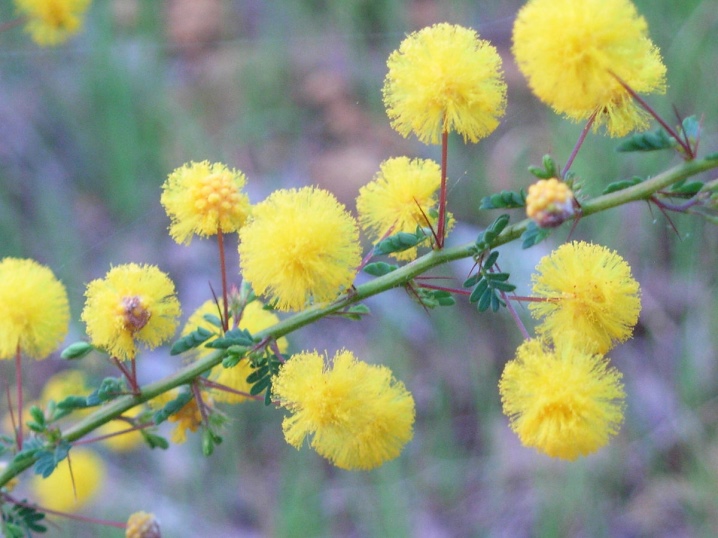
Long-leaved acacia (Acacia longifolia)
The tree grows up to 9 meters. Long flowering branches fall like a golden waterfall. Acacia has shoots with lanceolate phyllodia. Delicate yellow flowers are collected in spike-shaped inflorescences.
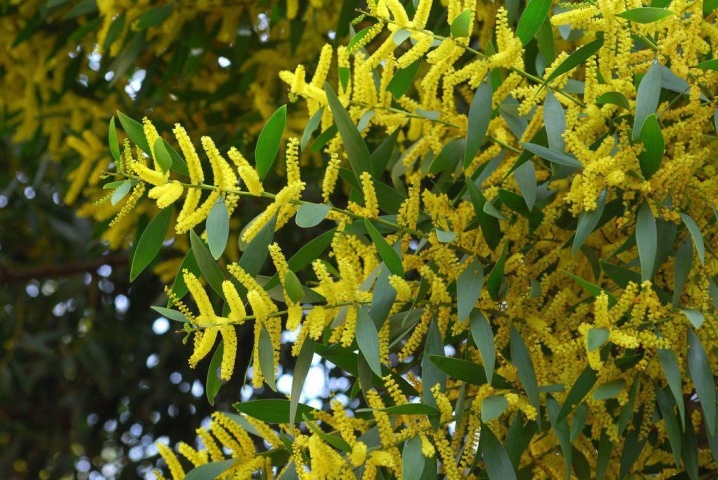
How to choose?
Having decided to plant acacia on the territory of your site, you need to think carefully about the place where it is possible to do this. The plant has a significant root system with a deep main root and a rhizome that grows to the sides. Transplanting a tree in a couple of years will not be easy.
First of all, they choose the type of acacia that is suitable for climatic conditions. Further, they are determined according to the design objectives: tree-like or bushes.
Having decided on the variety, you should carefully examine the planting material itself. It is better if the seedling is at least a meter. Although, given the rapid growth of acacias, 30-centimeter seedlings will take root.
The barrel should be resilient without noticeable damage. The root will not create problems if, in addition to the central base, there are a sufficient number of lateral branches. The rhizome should be examined for disease. Spherical seals will tell you about the presence of root cancer - it is better to refuse such a plant.
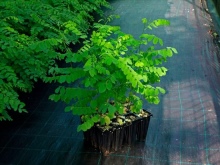
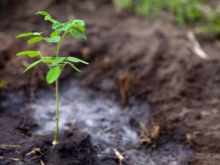
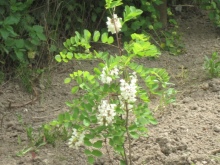
Examples in landscape design
Acacia is an unpretentious plant, and it is very easy to care for it. But not every type is suitable for landscape design. Ornamental varieties of acacias are beautiful for decorating gardens and parks in any form - both shrubs and trees. They make wonderful hedges.
The tree can be:
- plant separately on the lawn;
- create a mixed design like "wild" thickets;
- make the center of the composition of the "garden of stones".

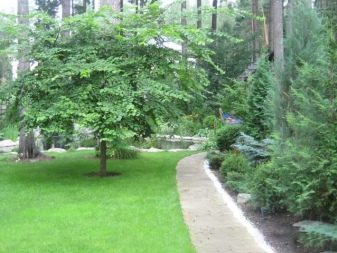
For these purposes, low, abundantly flowering tree varieties are suitable. The choice of color depends on the surrounding vegetation. The shrub is also selected according to the design concept.
- For those who like globular bushes, the calamus-leaved acacia is suitable.
- Boxwood acacia will make a wonderful hedge with amazing clusters of yellow inflorescences.
- If you need to hide the old fence, no one can cope with this task better than the acacia. Its curly stems with tenacious spines will braid any structure.
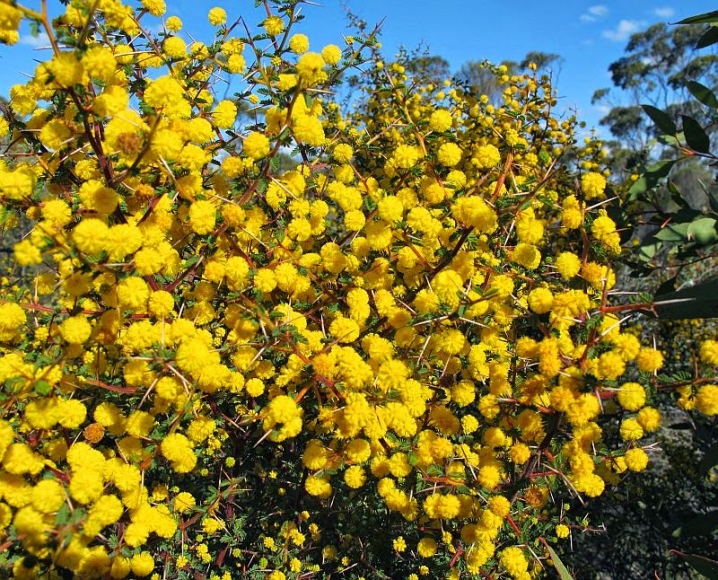
Silver acacia looks charming in landscape design - people mistakenly call it mimosa. It has lush, rich yellow inflorescences. This type of acacia grows only in the south of our country. Blooms from January to April. Where the climate is more severe, it is planted in tubs and taken out of the premises during the warm season.
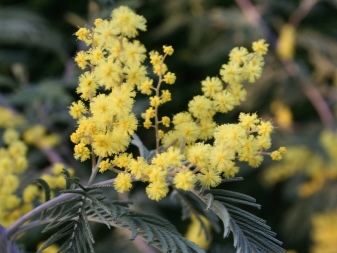
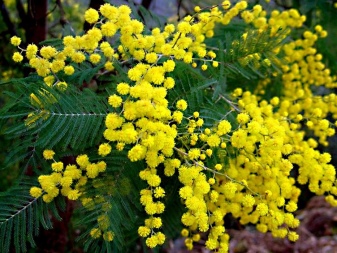
Pay attention to how beautiful acacia of different types and forms looks in the landscape design of gardens and parks:
- flexible creeping acacia varieties perfectly form gazebos and arches;
- spherical forms of acacia;
- hedge;
- artificial formation of trees and bushes of tropical acacias.
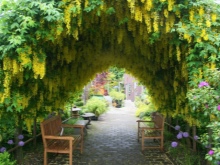
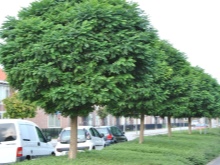
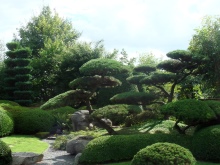
Acacia is not only beautiful but also healthy. Many of its types are used in medicine and perfumery. In addition, it, like all legumes, enriches the soil with nitrogen, thereby improving the soil cover of the garden.
For white acacia, see the next video.



































































The comment was sent successfully.